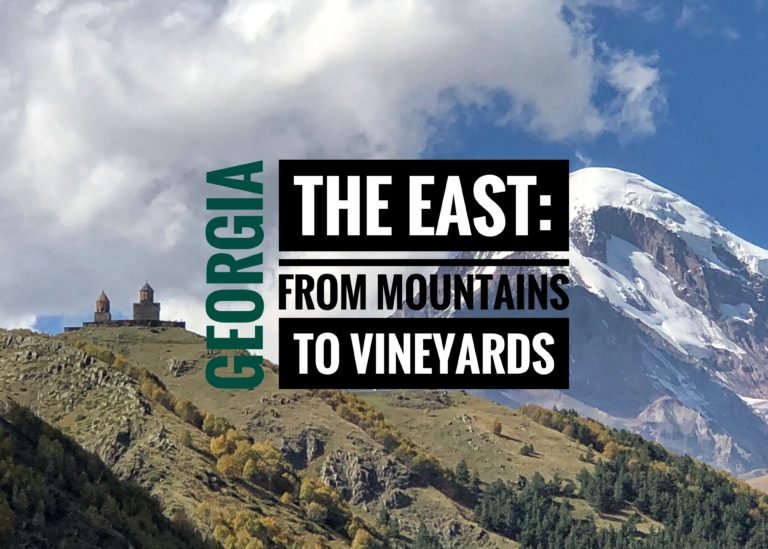
When you’re staying in San Miguel de Allende, it’s easy to slip into something more comfortable by heading up to one of the area’s many thermal hot springs. We chose La Gruta Spa, famous for its man-made otherworldly cave system, luxurious spa options and steaming water. Tickets for two people were $500 pesos ($25) and we got there by catching a local bus from the intersection of Calz de La Luz and Hidalgo, which was $40 pesos ($2) round trip for both of us.
La Gruta

The cave gets quite dark, and due to the hot waters, rather steamy also. The depth of the cave is 4 feet (1.2 meters).


Swimming through the cave tunnel. You glide along this entrancing corridor…

…until you drop into the awaiting open arms of the domed grotto. Inside you can also bask in a natural hot springs waterfall.
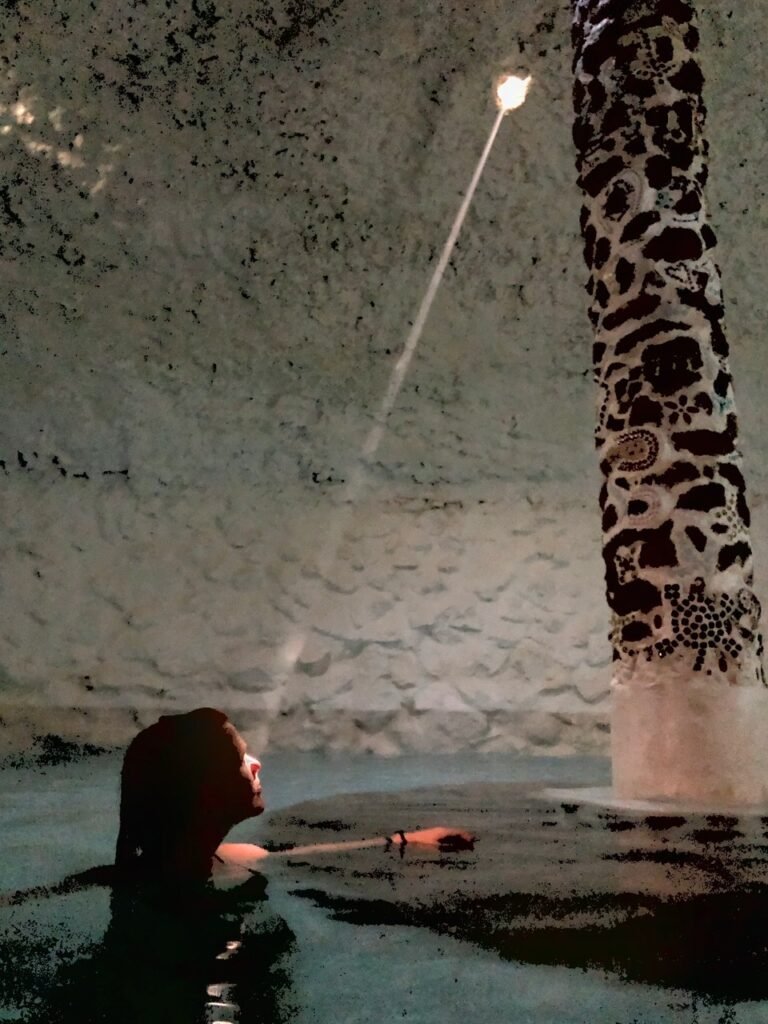

The light at the end of the tunnel.
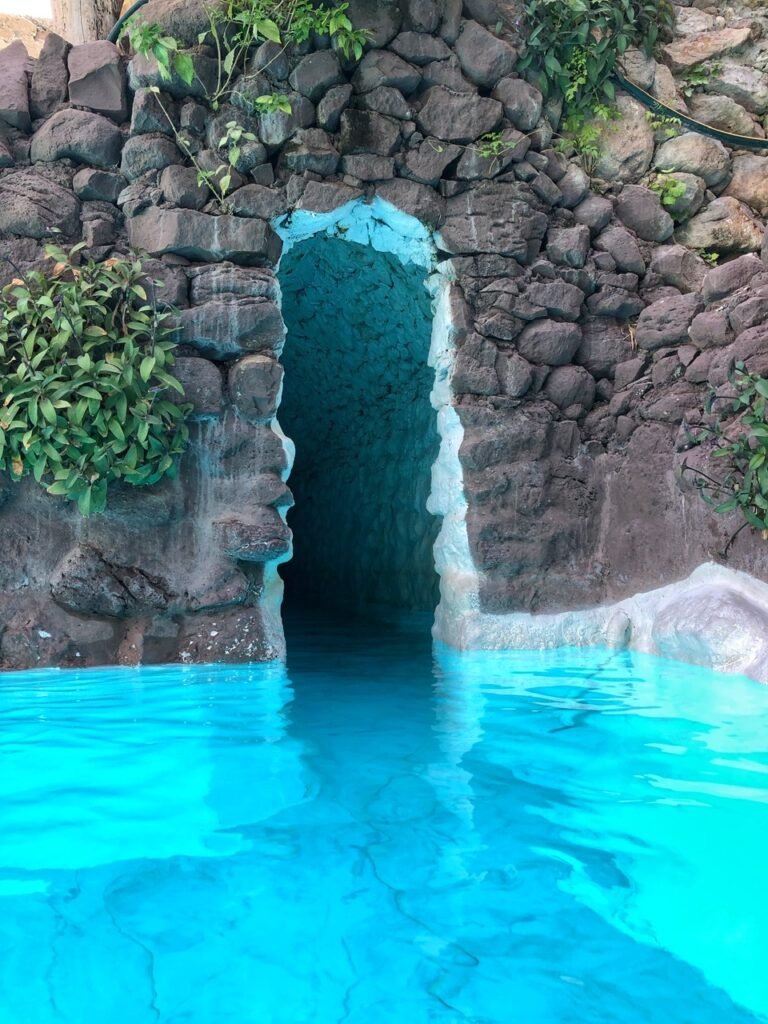
The entrance to the cave tunnel.

In total, there are four thermal pools at La Gruta, as well as other swimming pools for summer months. The busiest, of course, is the one that accesses the grotto. You can see there were a handful of people but it was very easy to social distance.

Lots of places for lounging and enjoying the food from the restaurant. Unfortunately, you can’t bring in food and drink, and the prices were on the higher side ($5-$9 for an entree), but since it was spa day, we opted for a splurge. The fajitas and salad we had were great!

The landscaping and lush gardens throughout the property were really beautiful.
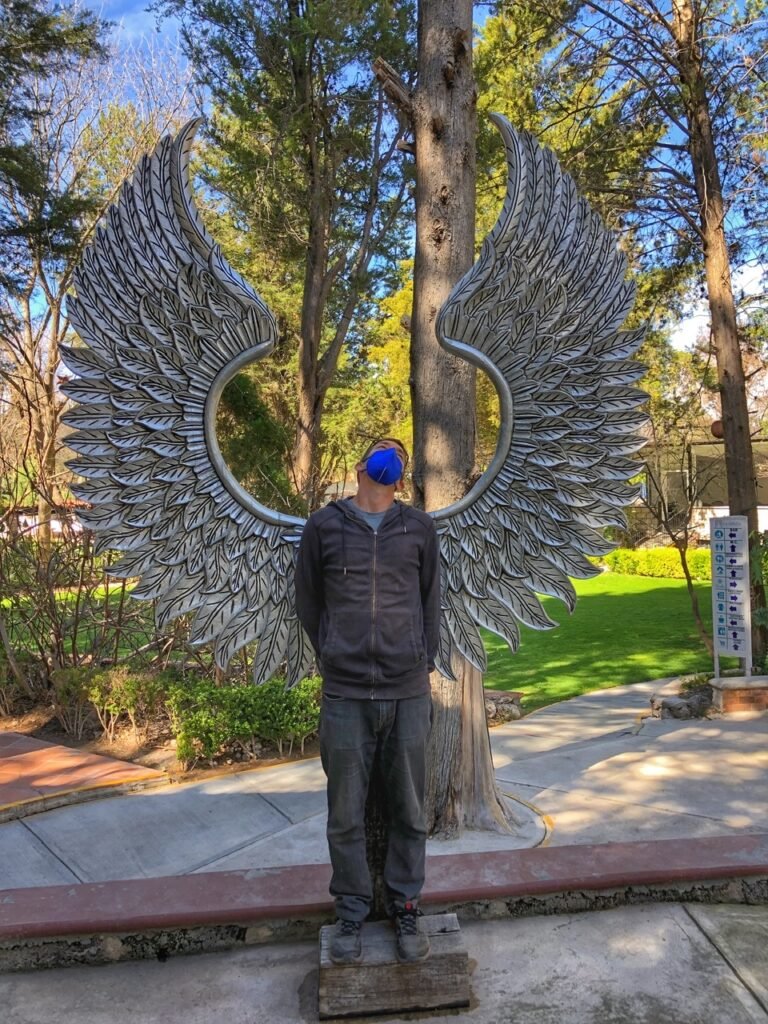
Greg looks like a dead bird. Too much relaxing for him.
Viñedos San Lucas Winery
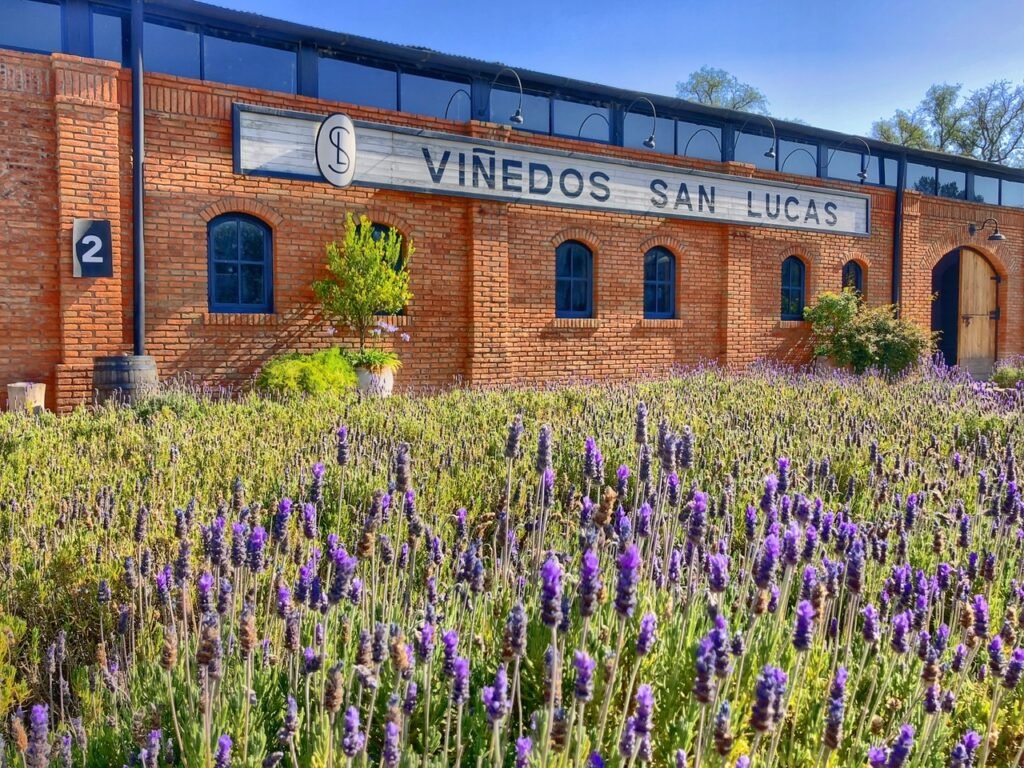
We’ve known for awhile that Mexico produces amazing tequila, but our eyes were blissfully flung open to the experience and allure of their developing wine production. Apparently in the last 15 years, it has really taken off and now Guanajuato state has a whopping 33 wineries, including Viñedos San Lucas, which opened in 2017 and we got to have a private tour and tasting thanks to the San Miguel Tourism Board.
Our first stop as mentioned was the San Lucas Vineyards, which isn’t merely just a wine stop, although it’s well worth it for that. They also have two 14-room hotels on site, a spa, three restaurants, tennis courts, walking/cycling paths, two polo yards (and even polo classes!), lavender and oil production (and classes), wine classes and even yoga retreats.
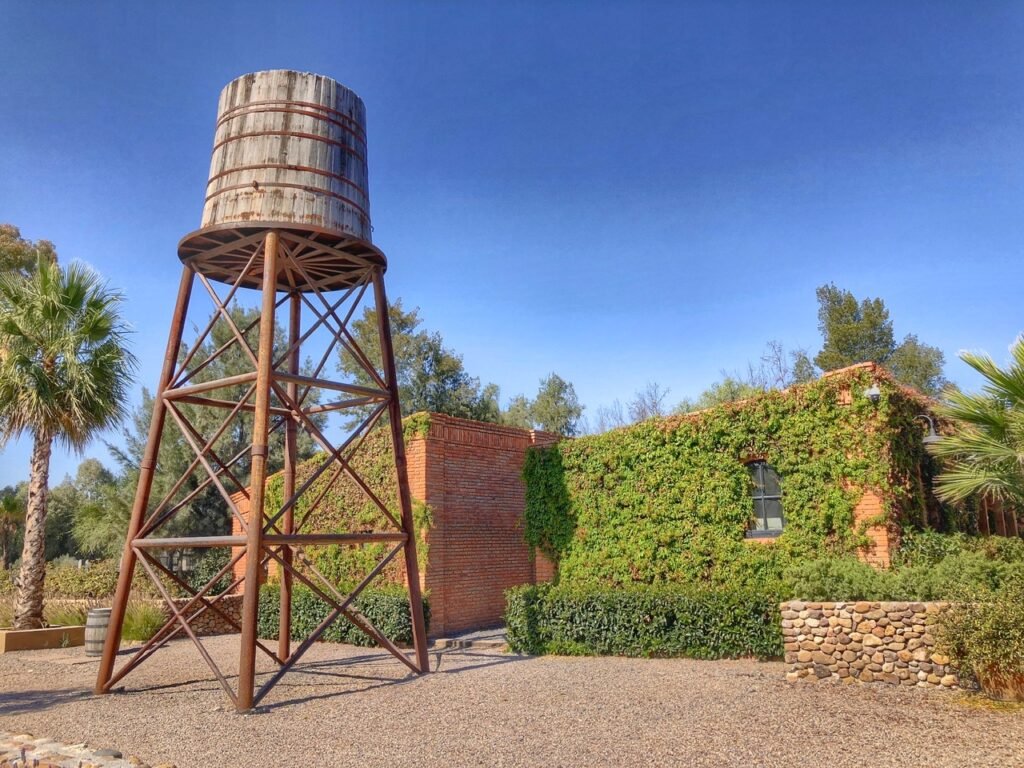
People can even become co-owners of property on the land, which offers them the possibility of living in the countryside and having a farm with vineyards, olives and lavender, but without having to invest or give it the attention it requires.



On the wine tour, our lovely guide Jessica told us all about the process. Although everything is done by hands during the harvest to protect the grapes, machines are used to de-stem the grapes in preparation for fermentation.
This machines spits the grapes out after being de-stemmed and four sets of (only) delicate lady hands sort through them for quality. All in all, the fermentation process takes 10-15 days.

And then, aged for up to a year in this 17-degree & 65% humidity cellar. The process is shorter for whites and roses than reds.


The wine is aged in American Oak barrels from California. They bottle 120,000 bottles a year: 80% red and 20% rose and white. Believe it or not, this was our first private wine tour ever!
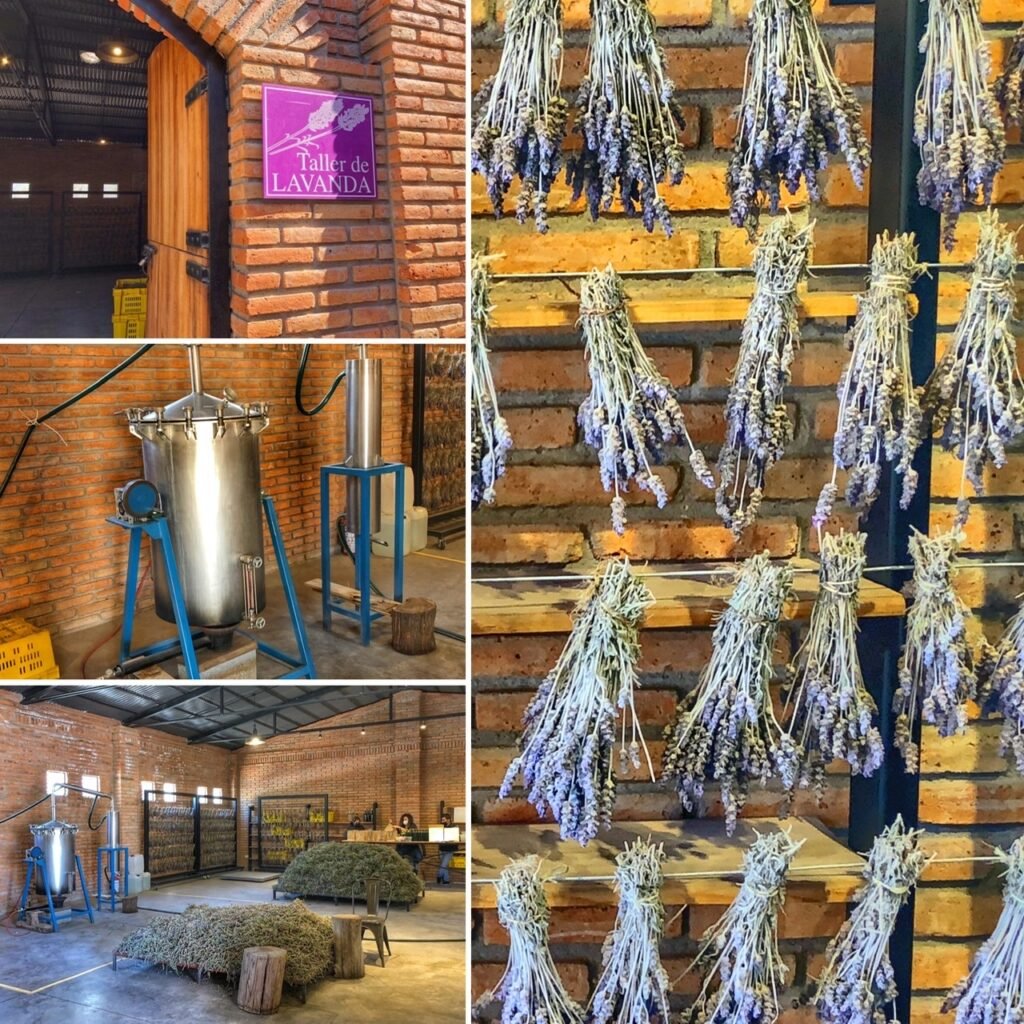
Entering the lavender workshop, we inhaled deeply, the relaxing redolence graciously sneaking its way under our masks. In this room they dry, sort, press and bottle the destressing plant to create lavender essential oils.

The outdoor seating area of one restaurant. So many opportunities to enjoy a glass! We figured this is where Jessica would take us for our tasting.
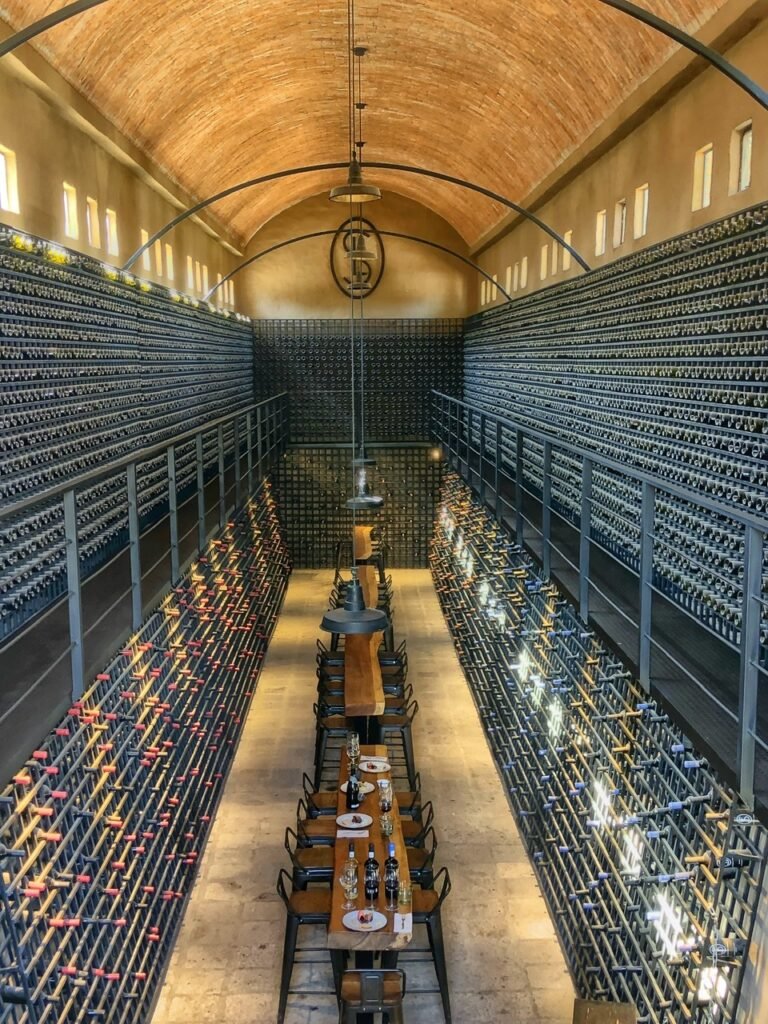
We were shocked when instead they directed us to this colossal wine storage and tasting room, which they use for events, with three exquisite place settings just for us!

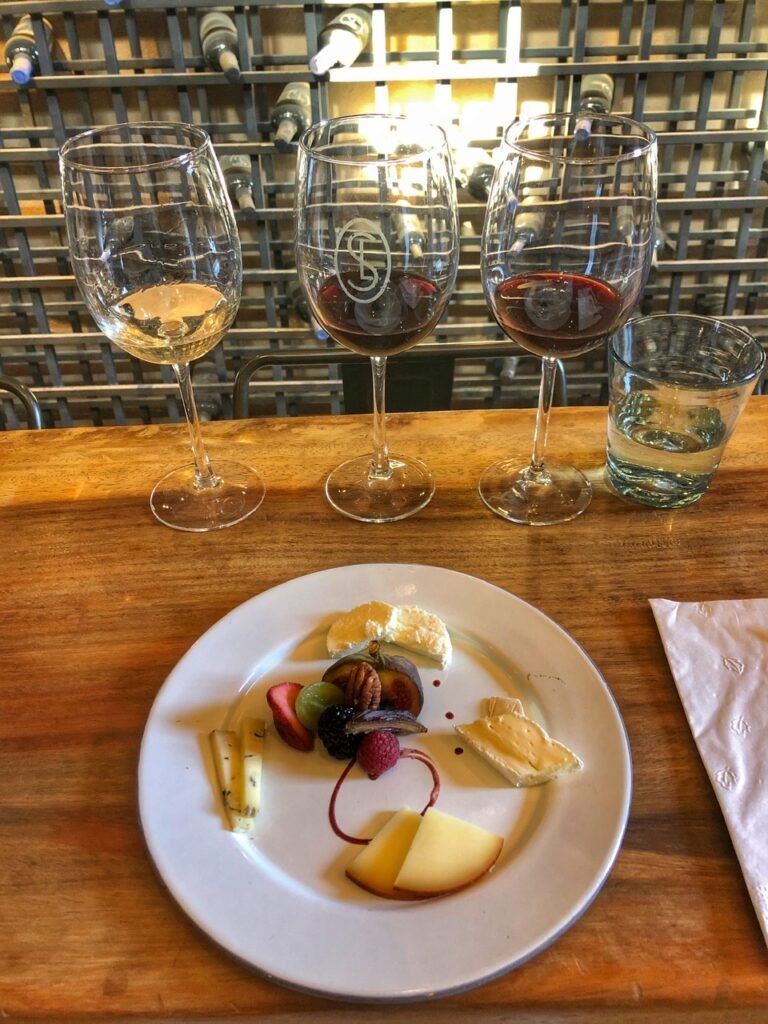
During the tasting, we asked Jessica, who is a sommelier educated in Baja, about the history of wine in Mexico. Baja was the first wine region in the ‘60s, almost exclusively opened by foreigners. Not surprisingly, thanks to their love of cerveza, Tequila and mezcal, she mentioned steering Mexicans into wine appreciation has been challenging. As of a few years ago, the average Mexican adult drank just one glass of one per YEAR. Now they’re up to three! Ah, progress. 🙂
She also introduced us to our first-rate display of wines and accompaniments through techniques, pairings and education. And the wines were….simply divine. This entire tour and tasting, which is on par with experiences we’ve had on the west coast, can be arranged through the San Miguel Tourism office at http://www.visitsanmiguel.travel or by calling 415 152 0900. Can’t believe we experienced this in Mexico! Who knew?!
Fabrica La Aurora

The exploration didn’t stop there. They took us to Fábrica La Aurora, which is a massive arts center, in a renovated historic textile mill from 1903, with 50+ galleries and shops displaying local artwork on the edge of San Miguel. It’s a ideal spot to spend the day just browsing or if you’re searching for a one-stop shop to furnish your digs.
The center is only about a 15-minute walk from el centro historico but apparently not too many people know about it! This is quite a shame since it’s a really incredible place!

They offer more than 50 galleries and shops, including lots of ideas to furnish your home…


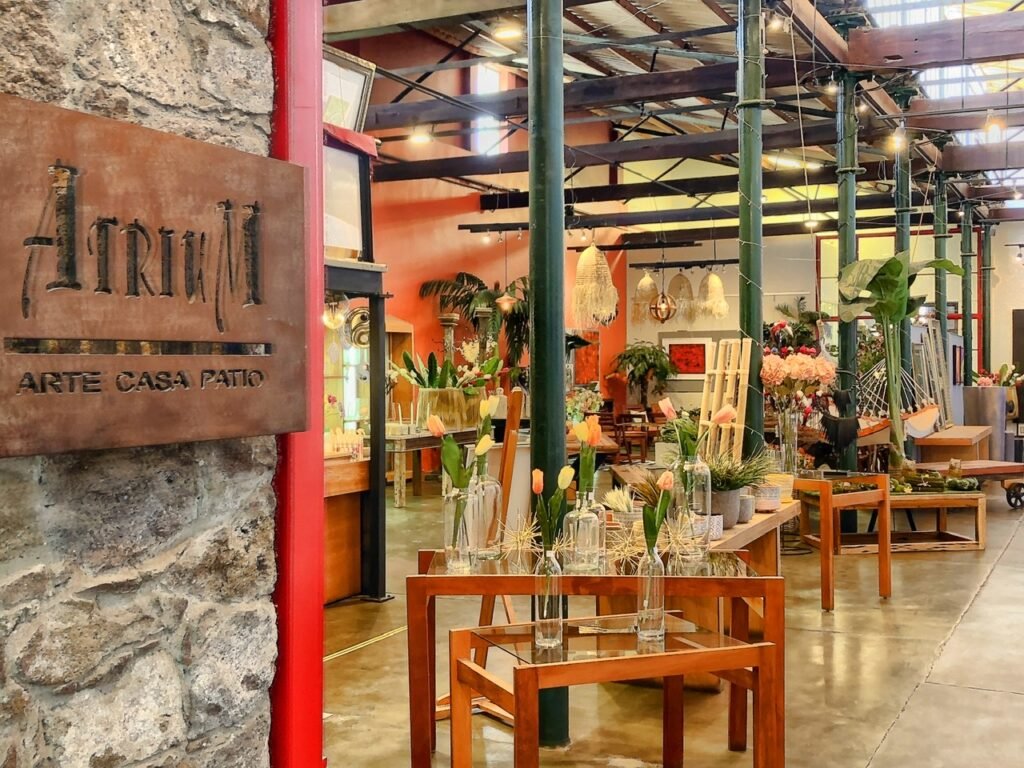

Extraordinary antiques…patio furniture…and stunning light fixtures.


And the galleries…you could easily spend an afternoon getting tangled in them!!
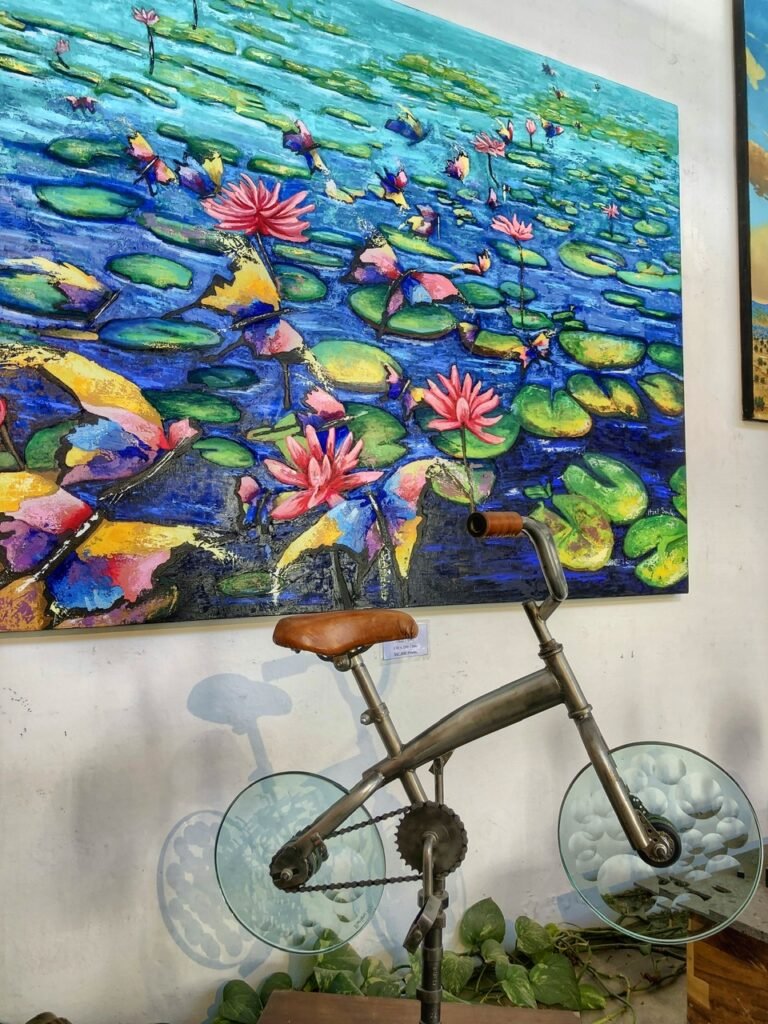

And all from local artists! Some of them even work in the studios while you watch. And once a month, they even do Art Walks where the artists are available to answer questions. The galleries offer loads of engaging paintings of San Miguel.

We even got to meet one of the local artists, Fernando Diaz who, like a true artist was garnished with splotches of paint. He is an artist of broad national and international trajectory and does acrylic painting and steel sculpture. He uses a lax, layered and texturized painting technique, some layers having up to a whopping 40 layers!

Behind his shop, we appreciated seeing signs of the early textile mill from 120 years ago.

When you’re ready for a break, there’s several cafes to grab a drink or a bite in. In addition to the galleries, cafes and shops, La Aurora also offers art workshops for the community!
Atotonilco

Next, we headed up to the sleepy town of Atotonilco. This town is significant because it served as a stopping point for Miguel Hidalgo on the quest for Mexican independence.
We wrapped up our time at the fortress-like UNESCO world heritage site, Sanctuary of Atotonilco, dubbed as the “Sistine Chapel” of Mexico, known for its stunning baroque murals.
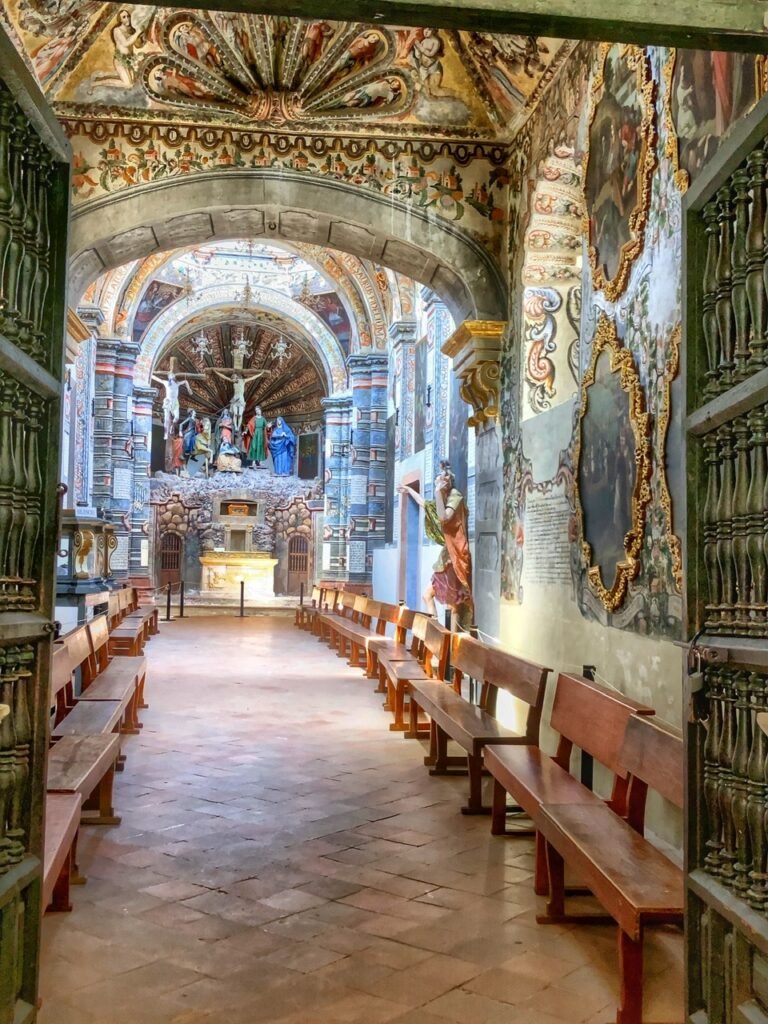
El Santuario de Atotonilco, which is a pilgrimage site to many, was built in the 17th century by Father Luis Felipe Neri de Alfaro, who, according to tradition, was called upon by a vision of Jesus with a crown of thorns on his head with blood on his face and carrying a cross. Unfortunately, due to COVID, we were only able to peep into the entrance.

The ceiling depicts the story of Jesus’ life and death
During the pilgrimages, thousands of peregrinos come to Atotonilco. Some of them walk around the church on their knees in an attempt to duplicate the sufferings of Christ; others tie bundles of spiny nopal cactus to their bare chests, wear hair shirts, or beat themselves with whips. The church has dormitories and dining halls for the approximately 100,000 who come annually.
http://www.experience-san-miguel-de-allende.com/atotonilco.html

The outside of the church almost looks like a fortress.

Wrapping up our tour with some delicious gorditas next the the sanctuary.
El Charco de Ingenio & Jardin Botanico

Oftentimes an escape into nature is exactly what we crave, and we were delighted to discover that San Miguel de Allende offers just that in its extensive botanical garden about a 30-minute walk from the historic center…El Charco de Ingenio. It was established perched on the edge of an impressive canyon in the year 1991 over 220 acres, and is chocked full of walking paths with unique, sometimes endangered plants, and a reposeful ambiance. We counted one other couple there with us on a Tuesday. ($50 pesos a ticket/$2.50).
Mexico has the richest variety of cacti in the world as well as a great diversity of species of other succulent families, with their strange forms and surprising colors. In the Zone of Rescued Plants, you’ll find the Golden Barrel Cactus, which we thought were intriguing. The non-spiny belly in the middle begs you to poke it to see if it closes around your hand like an anemone, (but we opted not to because we wanted to maintain all our fingers.)
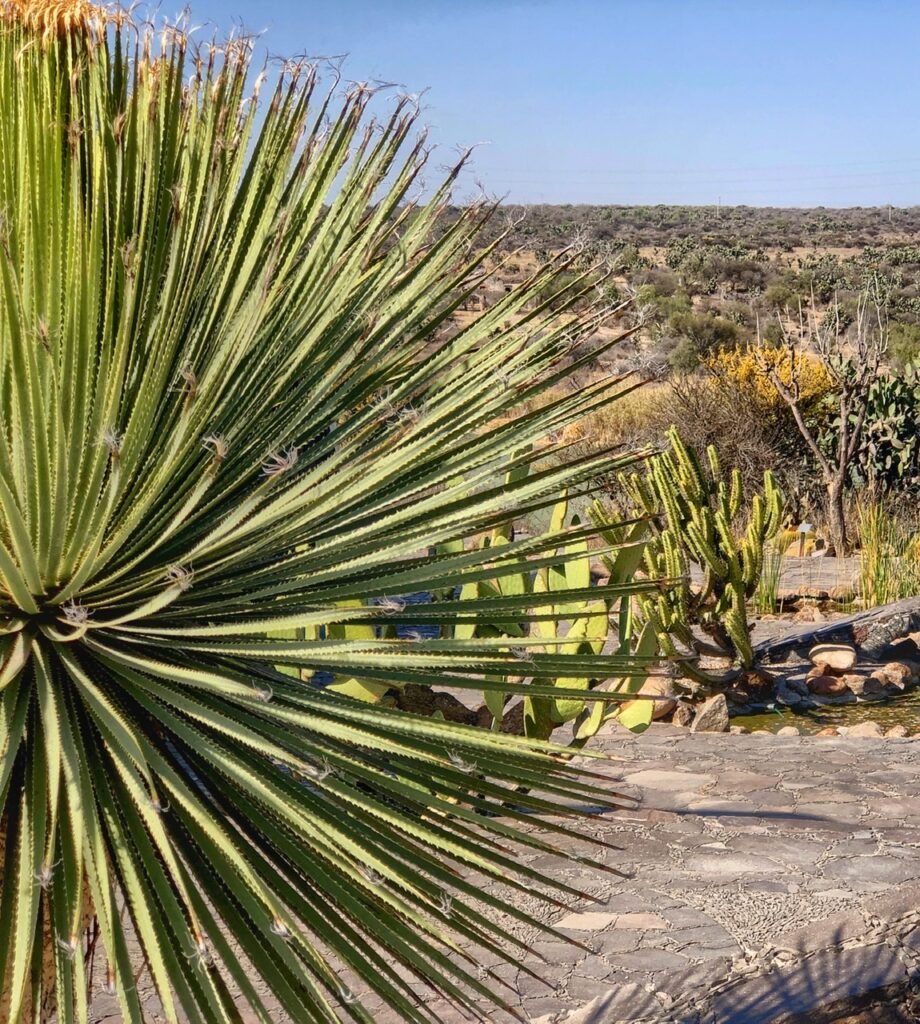

The brambly ball cactus. Just kidding. No idea what this one is called, but we sure loved the yellow poofs on the one at right.
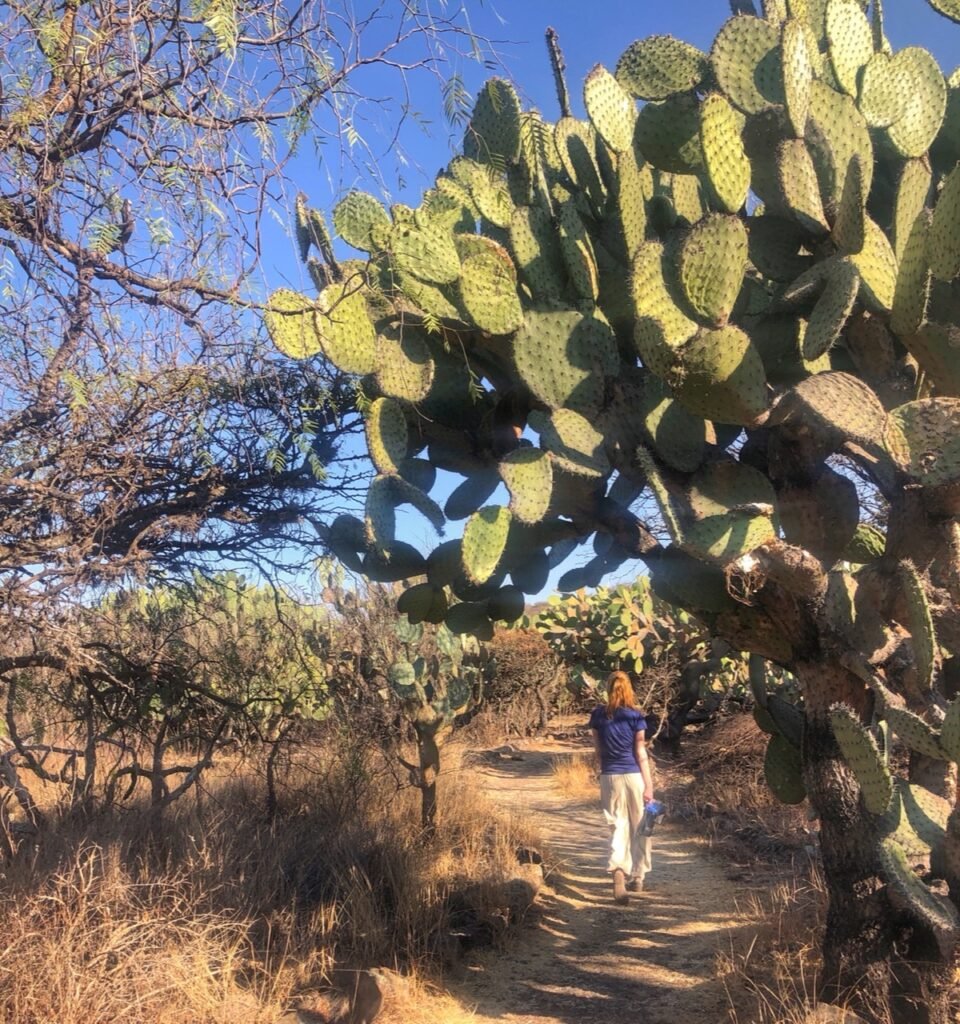
Plants and wildlife are distributed in three zones in the garden: the dry chaparral, the canyon and the wetlands.



Dam of the Reservoir from the 19th Century

Our map deemed this odd little boat-shaped structure to be The “Starship” Monumental Structure. When you enter it, it becomes a brief, but whimsical labyrinth which weaves its way to the top. No idea what it was actually built for or why, but undoubtedly there’s more to the story.

Agua! Agua! Por favor! Necesito Agua! P.s Don’t forget to bring YOUR water! Although, just a side note, there is a cafe and a small souvenir shop available.

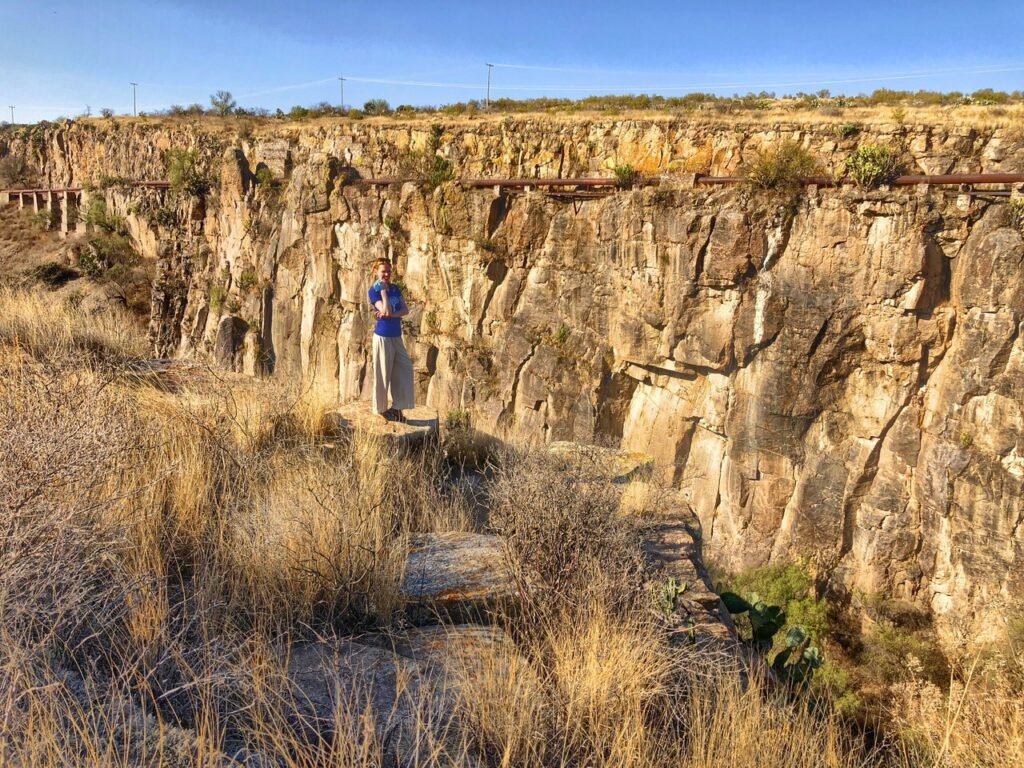
Mandy for scale. We were actually surprised at the size of the canyon.

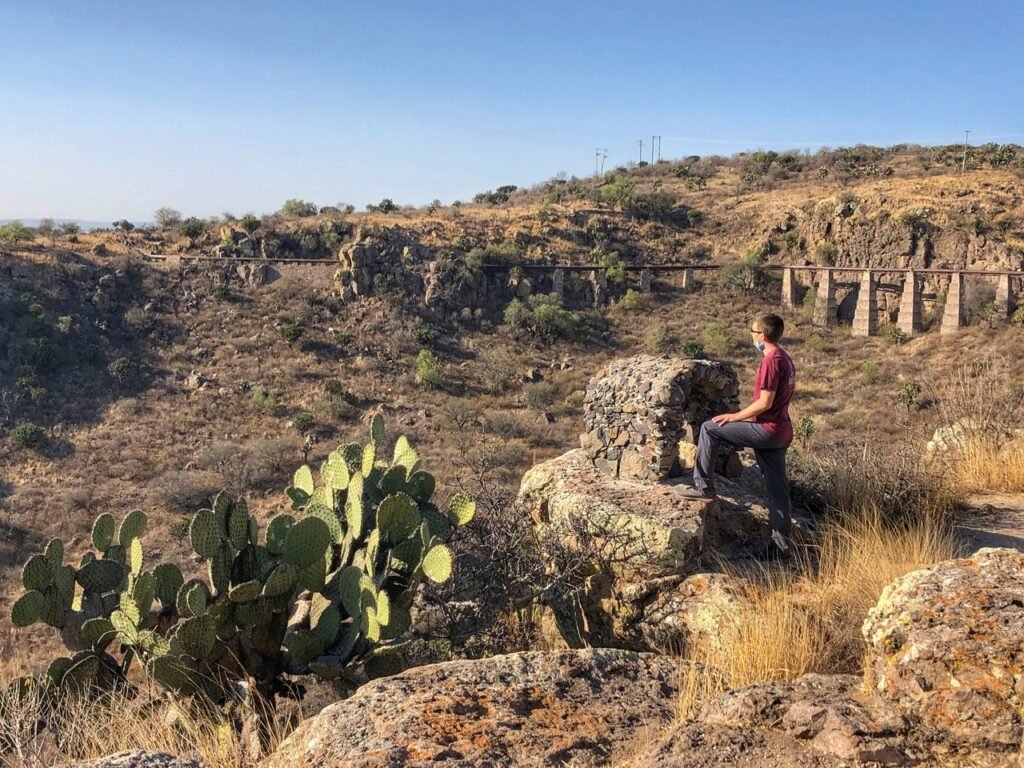
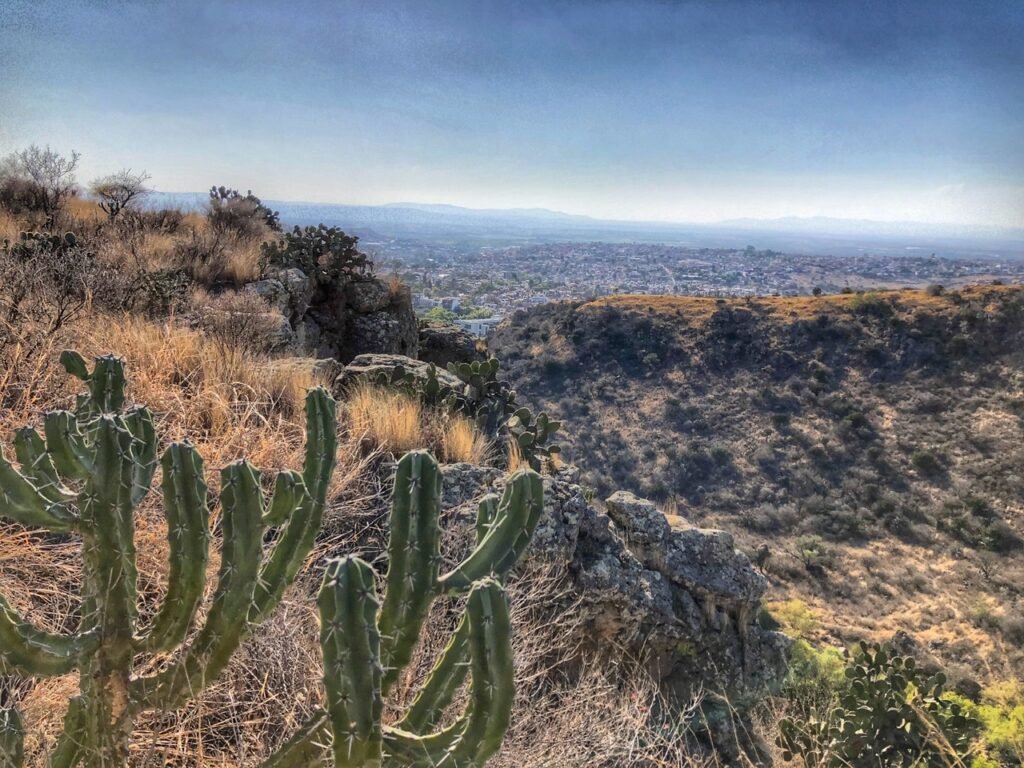
And even more with the depth!

The view of San Miguel. It was surprisingly a bit hazy.

More Golden Barrel Cacti. They are apparently rare and endangered in the wild, where it is found near Mesa de León in the state of Querétaro, and in the state of Hidalgo.

Passing massive houses on the way back down to the center. One even had an elevator to the terrace!


